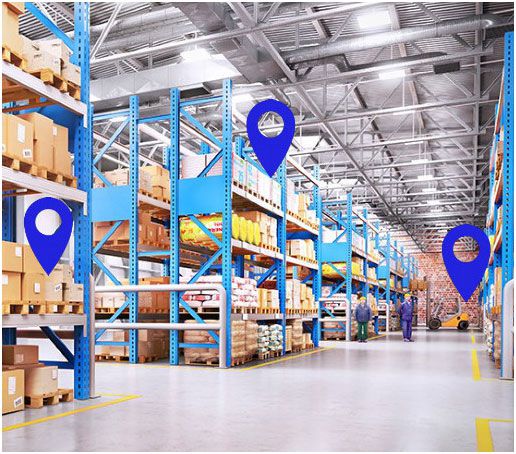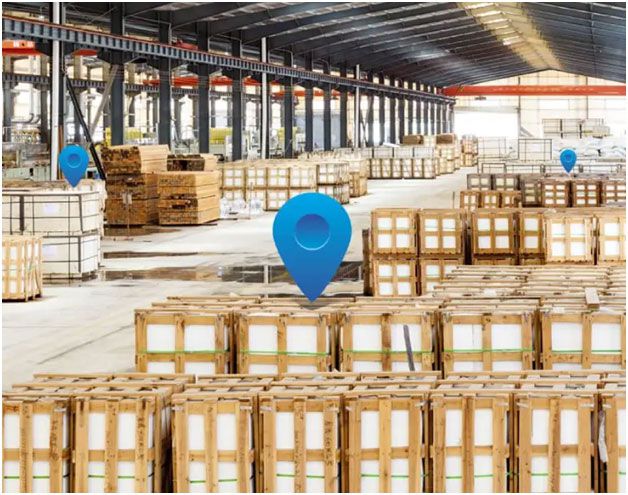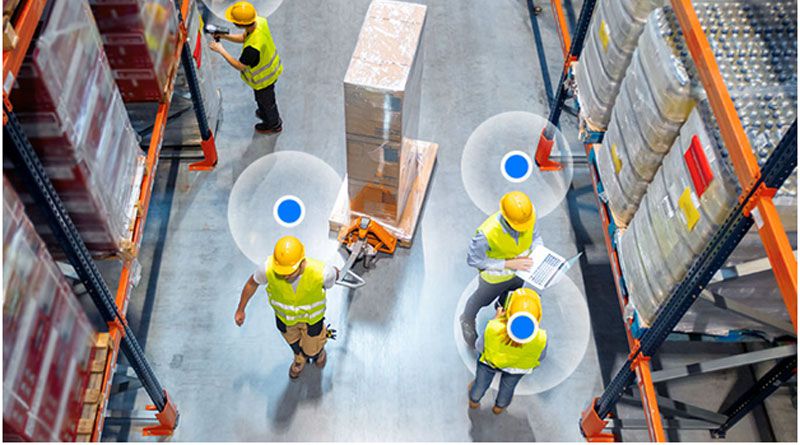A Bluetooth low-energy real-time location system is an indoor positioning device. It has improved the industry’s performance by a significant percentage. Since its introduction in the market, most companies have recorded jobs done more efficiently and maximized production. Using this system, you will track and locate assets within the company’s premise that are accurate centimeter level. The real-time location system (RLTS) is expected to grow the market from $3.186 million in 2018 to $8.792 by 2023, estimated growth of about 22.5% per year.
This Bluetooth low-energy BLE devices are more accurate and practical than conventional GPS systems within the industry because GPS signals cannot go through the building. The GPS is also expensive, consumes a lot of power, and is more complex to use than BLE. Moreover, the Bluetooth low-energy tags have batteries lasting up to seven years, depending on the data transmission.
Component of a Complete Bluetooth Low-Energy Real-Time Location System
The BLE RTLS is made of:
Bluetooth low energy tags: the tag transmits BLE signals at precise intervals through multiple sensors. The sensors are designed in 3-axis accelerometers, shock, temperature, and light sensors for surrounding condition monitoring.
BLE anchors: these act as a signal to a receiver that is transmitted by BLE tags. It also calculates the RSSI value angle and the angle of departure.
BLE gateways: it collects information from BLE anchors, enabled by WI-FI connectivity, allowing communication to the edge computer.
How BLE Improves Productivity in an Industry

BLE Offers Accurate Asset Tracking at a Lower Cost
It took hard work and time to come up with a real-time location system that would be reliable without spending so heavily on it. Other products before BLE, like UHF and WIFI, used frequencies but were not as effective as BLE when customer satisfaction was concerned.
BLE has been the most accurate RTLS because it provides data like movements and temperature change. You can use the information to diagnose the issue before it becomes hazardous in an industry.
You may think the BLE system costs a fortune because of its features, but they are inexpensive, and you can access them easily. There is another RTLS in the market, like ultra-wideband (UWB), but it’s expensive; that’s why most industries won’t use it.
The Indoor Tracking Become Highly Scalable With Bluetooth Low-Energy System
Because of BLE components’ low cost, the employer can expand the use and the number of the tracking tags. These systems are unchallenging to install and use, meaning you can scale the tracking system as much as your company needs without fearing high prices or high maintenance costs.
All you need to know is if you have many BLE tags updating concurrently, just ensure the IoT can handle the messages without losing data. Most standard BLE systems can handle up to a certain amount of messages; if overloaded, it may cause leakage and inaccuracy.
So go for a BLE RTLS system that is more flexible, meaning it has room for expansion by adding more tags, or you can expand the trackable area in case the company grows.

Bluetooth Low Battery Energy Battery Lasts Longer
Battery life is very crucial in any system, including BLE. Tracking, sending, and receiving information might affect battery lifespan; depending on how frequently you use the system, the battery may get damaged quickly. But that’s not the case with BLE batteries; these batteries have a high performance and can last up to seven years without replacement.
The batteries can have a longer lifespan because the Bluetooth tags use low energy; plus, replacing damaged batteries won’t be a problem because the batteries come at lower prices and are easy to fix. The BLE tags help conserve energy since the user can set how often to receive the location updates and can be on sleep mode when not used. Moreover, with the Air Finder Software program, you can customize the Bluetooth tags where they will give location updates after a few minutes, hourly, or when the asset is in motion.
Most Effective Compared To Passive Tracking Systems
The BLE system’s effectiveness in real-time asset tracking makes it stand out from the rest. This means you can check the Bluetooth tag’s current location at any time. Since the Bluetooth tag is customizable, you can update it according to the conditions and the locations.
For example, you may customize it to detect collisions that might cause injury in the industry. You can also customize it to detect the surrounding environment, like too hot or humid. Once it detects danger, it sirens, and you can take care of the problem, like moving apart the colliding assets.
Although some people go for Radio Frequency identification, it cannot provide real-time locations like BLE RTLS. Additionally, its tags use low frequency; if the employee forgets to scan the tag, it might be challenging to identify the area immediately.
Conclusion
BLE RTLS improves the productivity of a company by a significant percentage. You can keep real-time track of the assets inside the company. This means the job will be done more efficiently, and you can monitor the movements of assets without following them. Using several BLE tags in one edge computer makes it easy to monitor the industry quickly. The BLE RTLS is most convenient for small and big businesses since they are highly affordable, and the tags batteries have a long lifespan.

Namaste UI collaborates closely with clients to develop tailored guest posting strategies that align with their unique goals and target audiences. Their commitment to delivering high-quality, niche-specific content ensures that each guest post not only meets but exceeds the expectations of both clients and the hosting platforms. Connect with us on social media for the latest updates on guest posting trends, outreach strategies, and digital marketing tips. For any types of guest posting services, contact us on info[at]namasteui.com.

